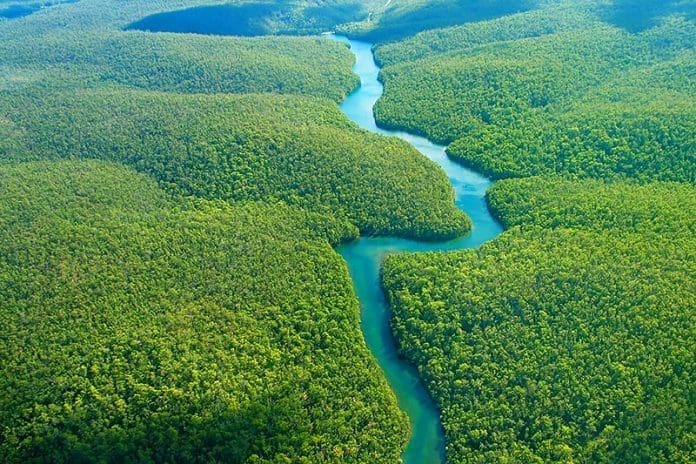The world’s attention turns to Belém, Brazil, this November as the city prepares to host COP30, the 30th United Nations Climate Change Conference. Scheduled from November 10 to 21, 2025, this marks the first UN climate summit held in the heart of the Amazon rainforest, bringing together over 60,000 participants including heads of state, diplomats, and climate activists.
The timing couldn’t be more significant. Countries are expected to submit their next round of national climate plans, known as NDCs 3.0, in 2025, making this conference a crucial checkpoint for global climate ambitions. But there’s a problem brewing beneath the diplomatic pleasantries.
Brazil has set three main goals for the summit: reinforcing multilateralism and cooperation, connecting climate change to individuals and the economy, and accelerating implementation. COP30 President André Corrêa do Lago has emphasized the need for countries to take strong collective action commensurate with the scale of the climate challenge. His appointment in January 2025 was praised by Brazilian climate activists given his history of leading climate justice discussions.
Yet hosting the conference has created an uncomfortable paradox. Brazil is constructing a four lane highway through the Amazon rainforest to accommodate COP30 attendees, a project that undermines two of the summit’s main themes: preserving forests and biodiversity, and climate justice. The highway, called Avenida Liberdade, cuts through protected rainforest and has sparked fierce criticism from environmental advocates who see it as contradicting Brazil’s stated climate commitments.
Official organizers and the state of Pará have disputed the highway’s connection to the conference, stating the project was planned as early as 2020. However, critics note that while discussions began in 2012, the COP may have provided the final push needed to greenlight construction. The controversy highlights the tensions between infrastructure development and environmental protection that developing nations frequently navigate.
The conference location itself carries profound symbolism. The Amazon rainforest stores approximately 150 to 200 billion tonnes of carbon and produces roughly 20 percent of the world’s oxygen. It’s not just a Brazilian treasure but a global lifeline, making its protection critical to any meaningful climate strategy.
Brazil intends to launch its headline Tropical Forests Forever Facility at the conference, a mechanism designed to deliver mixed public and private financing to prevent tropical forest loss. The $125 billion blended finance investment fund aims to begin payouts rewarding forest conservation in tropical countries by 2026, pending finalization of investments from sovereign funders at COP30.
Financial commitments remain a central tension point. Parties at COP29 in Baku agreed to scale up financing to developing countries for climate action to at least 1.3 trillion dollars per year by 2035, known as the Baku to Belém Roadmap. Negotiations at COP30 will focus on how international climate finance scales from the $300 billion agreed in Baku to that ambitious 1.3 trillion dollar target.
The stakes extend beyond forests and finance. The Belém Health Action Plan will be launched on Health Day, November 13, emphasizing health systems, adaptation, equity, climate justice, and social participation. This framework aims to mobilize the global community toward building climate resilient and environmentally sustainable health systems, recognizing that climate change fundamentally threatens human wellbeing.
The Brazilian Federal Government is investing approximately 4.7 billion Brazilian reals in preparations, including funds from the Federal Budget, BNDES, and Itaipu. Infrastructure projects include transforming a former airport site into City Park, where the conference will be held, along with renovations to the Hangar Convention Center and restoration of historic warehouses at Porto Futuro II.
But preparation challenges abound. Reports of extreme price gouging for lodging emerged months before the event, with some Airbnb listings priced as high as 9,320 dollars per day, creating an accommodation crisis that threatens to limit participation from smaller delegations and civil society organizations.
The conference also faces questions about real progress versus performative gestures. According to the UN’s latest Emissions Gap Report, the world is heading for up to 2.9 degrees Celsius of warming by the end of the century, far above the Paris Agreement’s 1.5 degree target. Global emissions continue rising despite decades of climate conferences, fueling skepticism about whether COP30 can deliver transformative action or will produce another round of unmet promises.
COP30 will be the first conference to return to Brazil since the inaugural Rio Earth Summit in 1992, which led to the establishment of the United Nations Framework Convention on Climate Change. That historical connection adds weight to Brazil’s responsibility as host nation and its opportunity to demonstrate genuine climate leadership.
The summit’s success may ultimately hinge on whether it can move beyond the endless cycle of negotiations toward actual implementation of climate commitments. Indigenous communities and traditional forest guardians will have unprecedented prominence at COP30, reflecting growing recognition that those closest to threatened ecosystems often possess the most effective conservation knowledge.
As November approaches, the world watches to see whether COP30 will mark a genuine turning point in climate action or become another missed opportunity. The location in the Amazon serves as both inspiration and warning, a reminder of what’s at stake when promises fail to match the urgency of the climate crisis unfolding in real time.
Source: newsghana.com.gh











